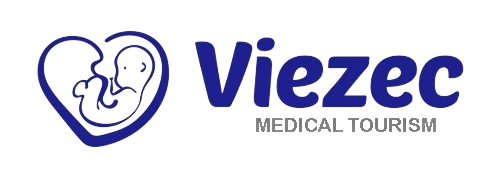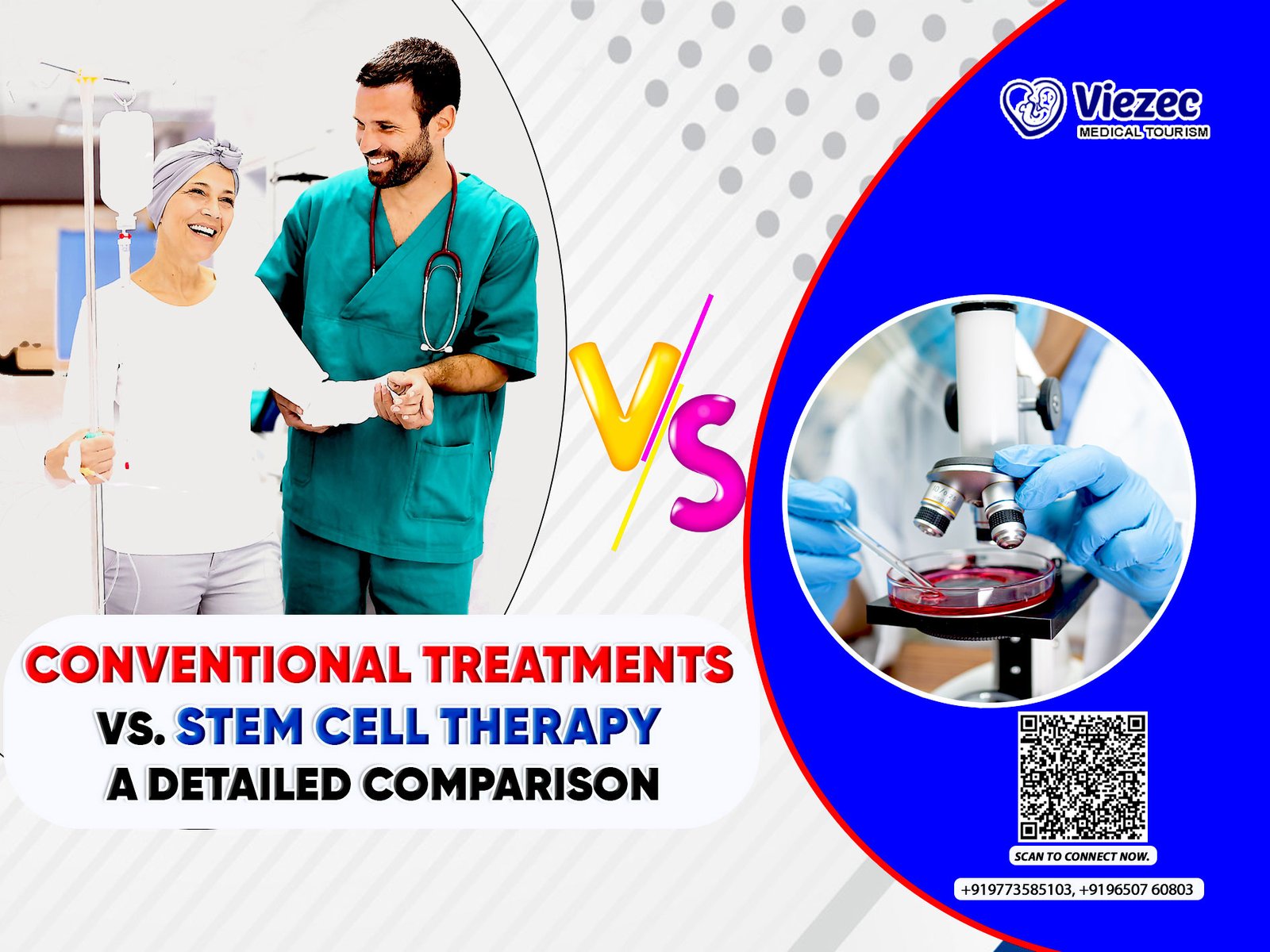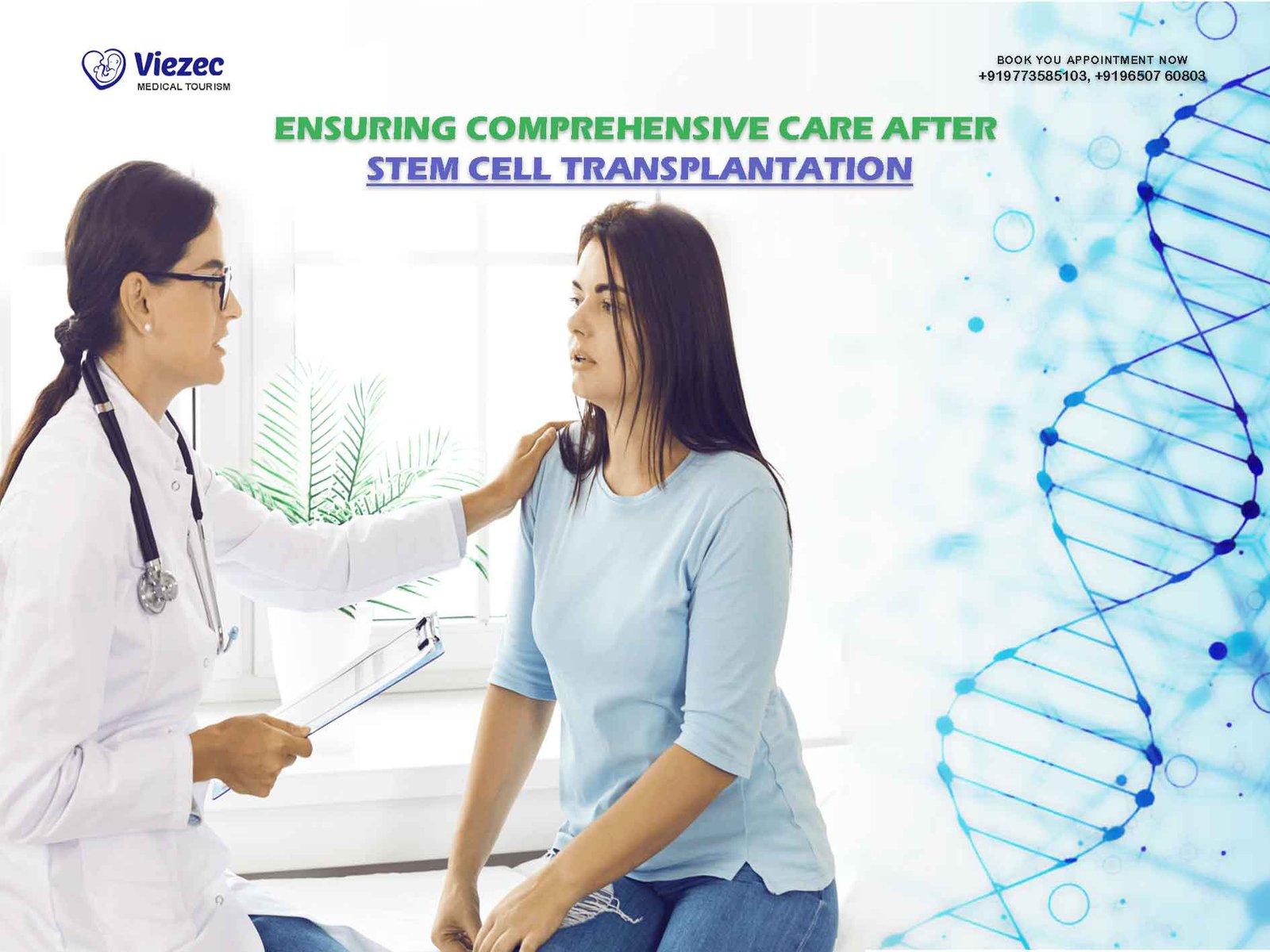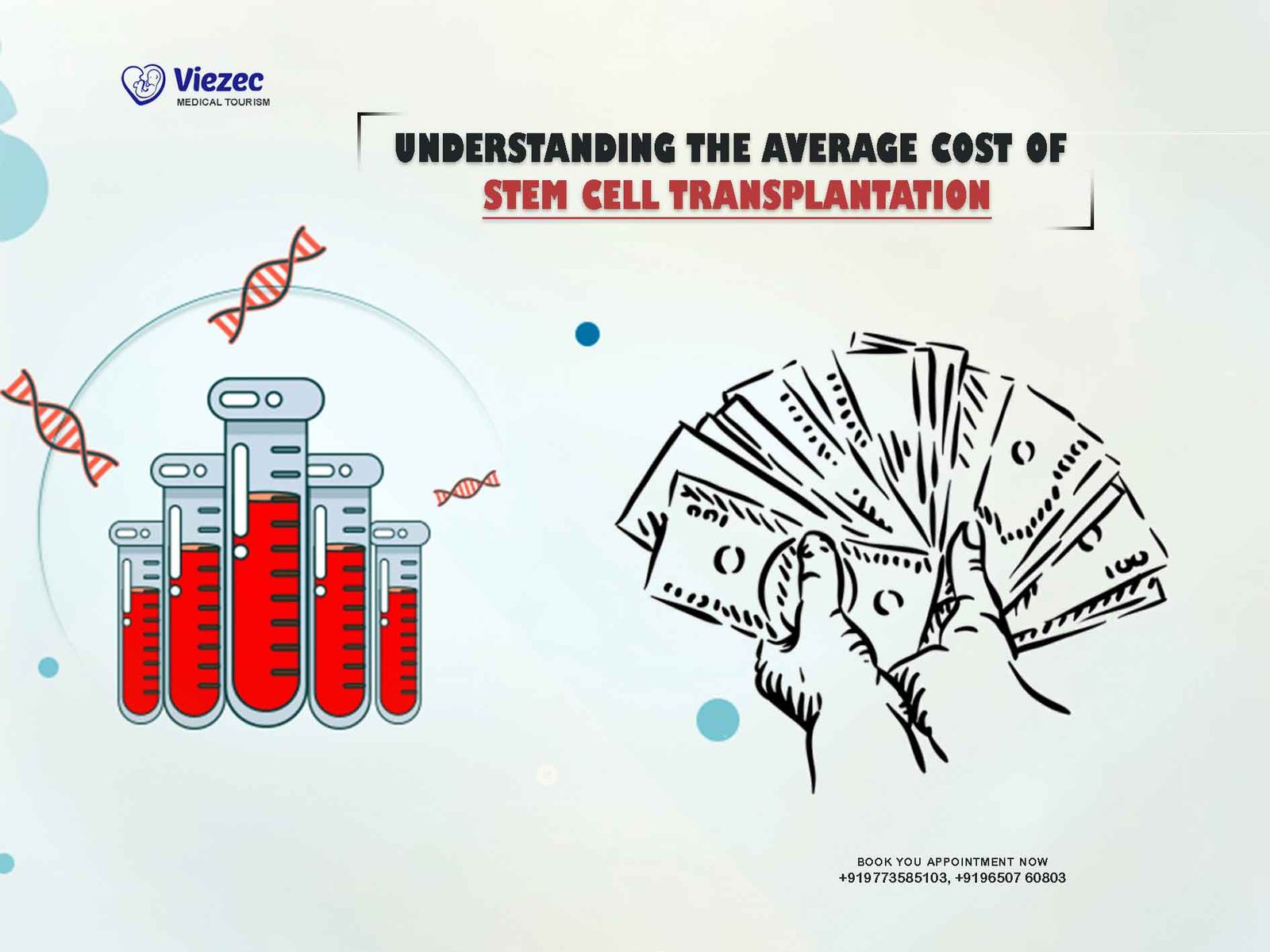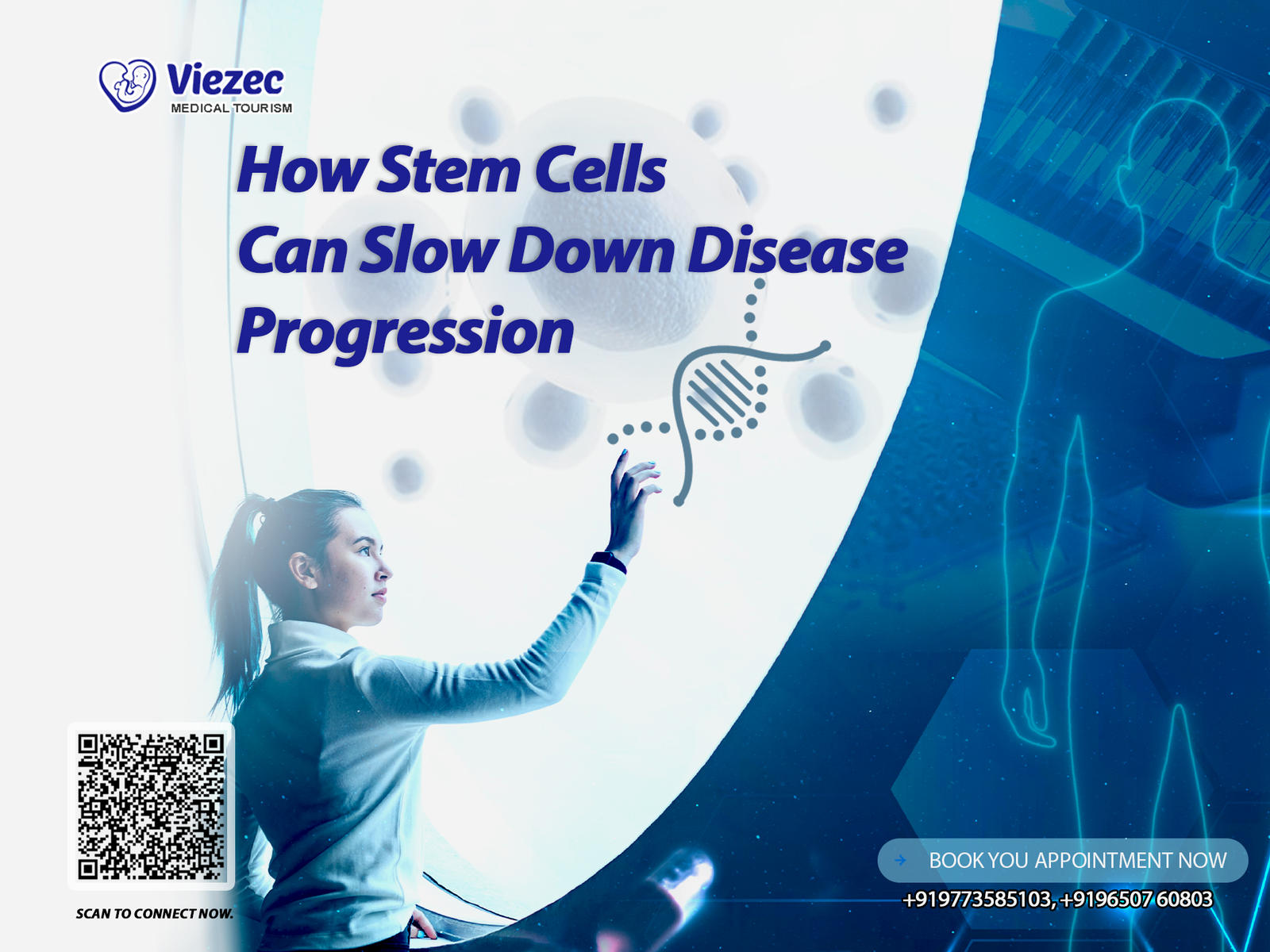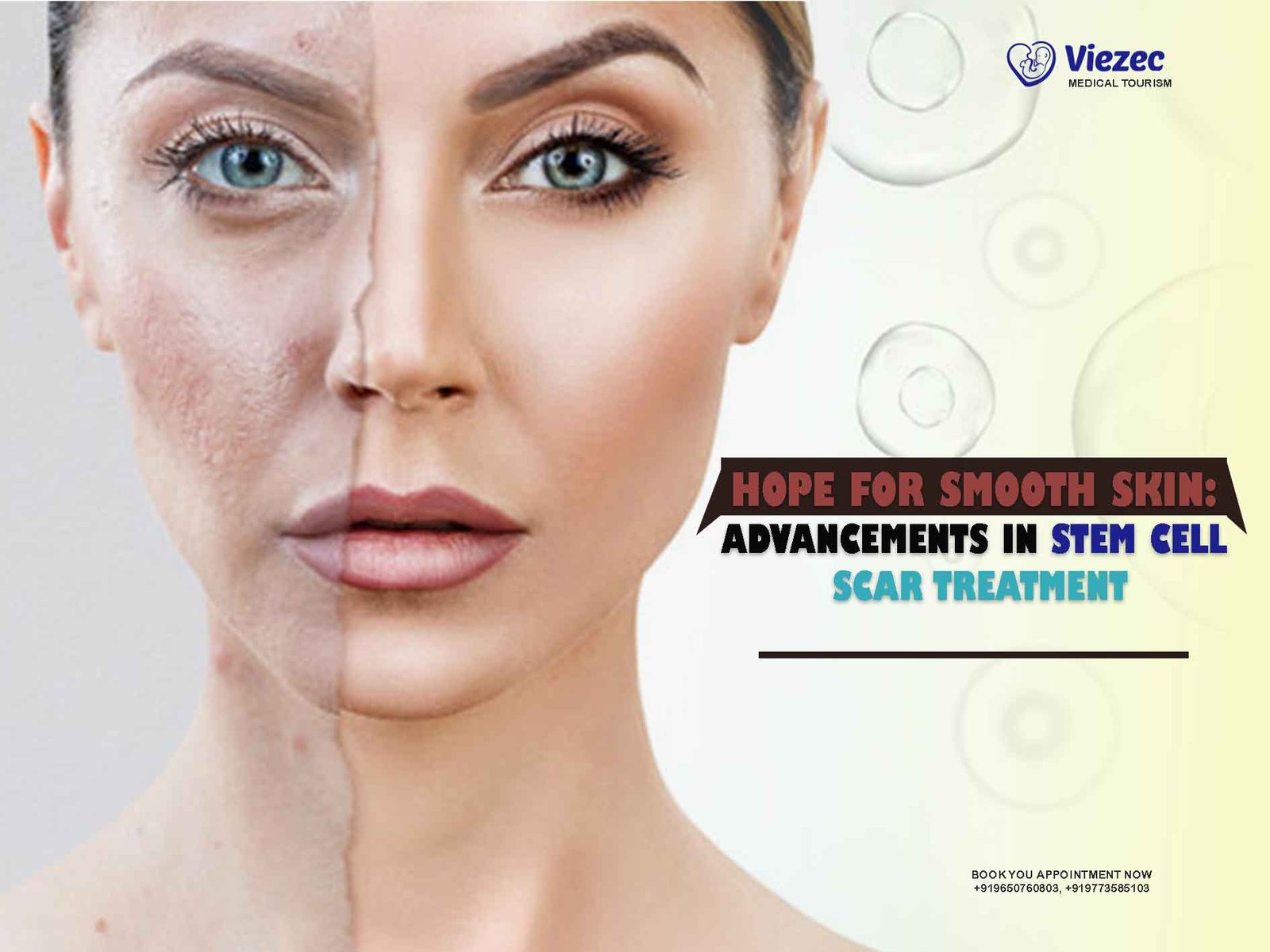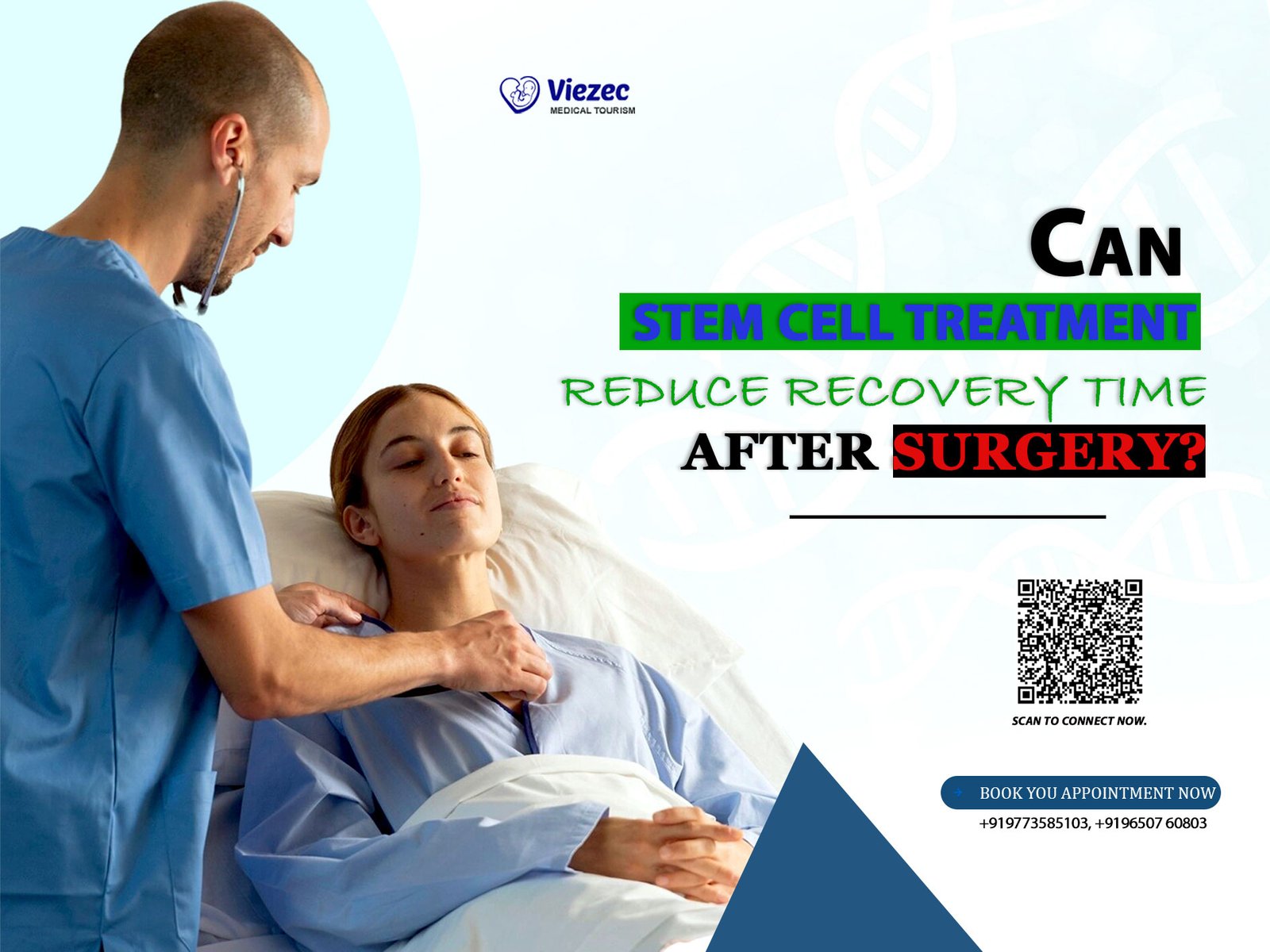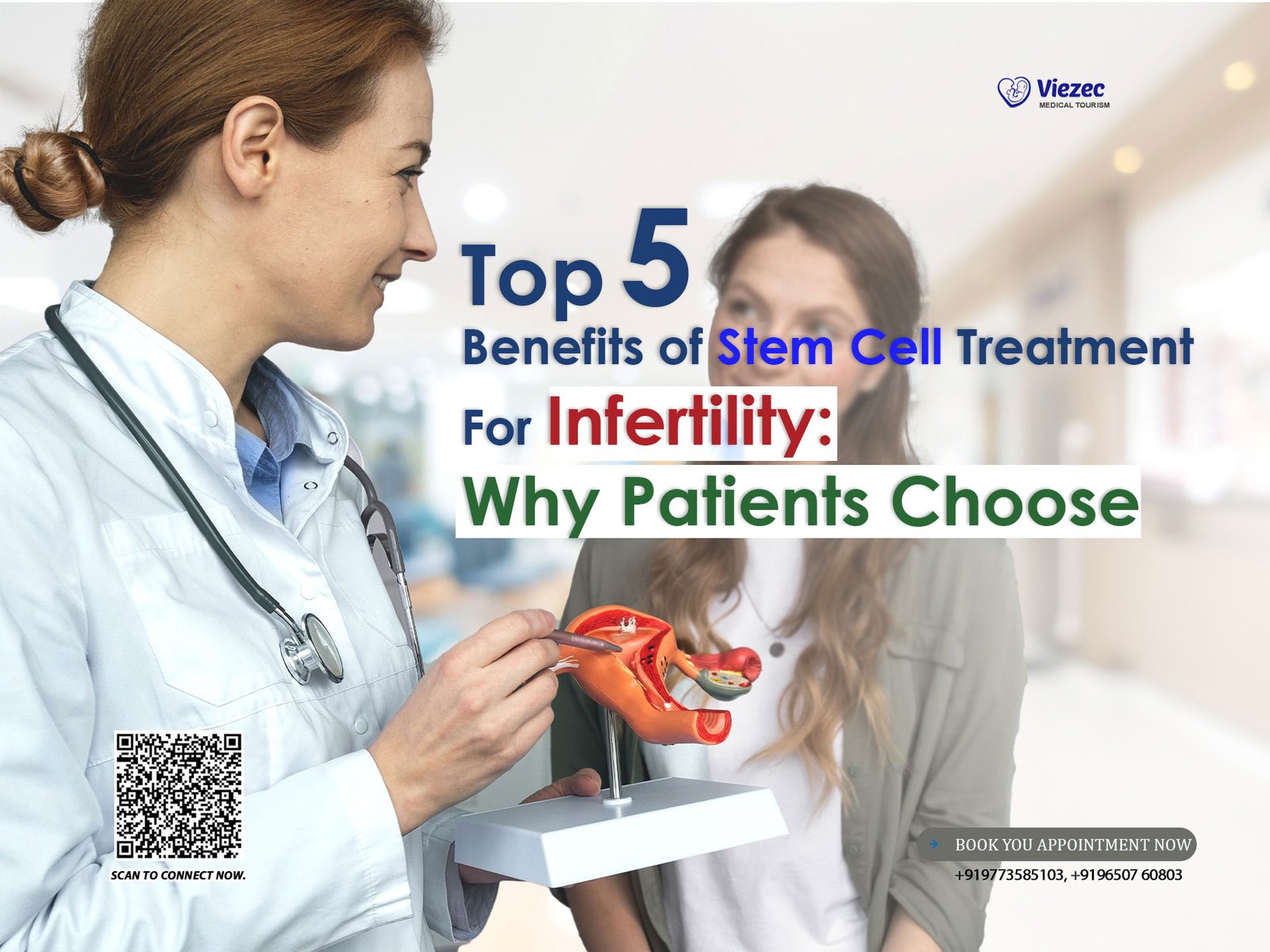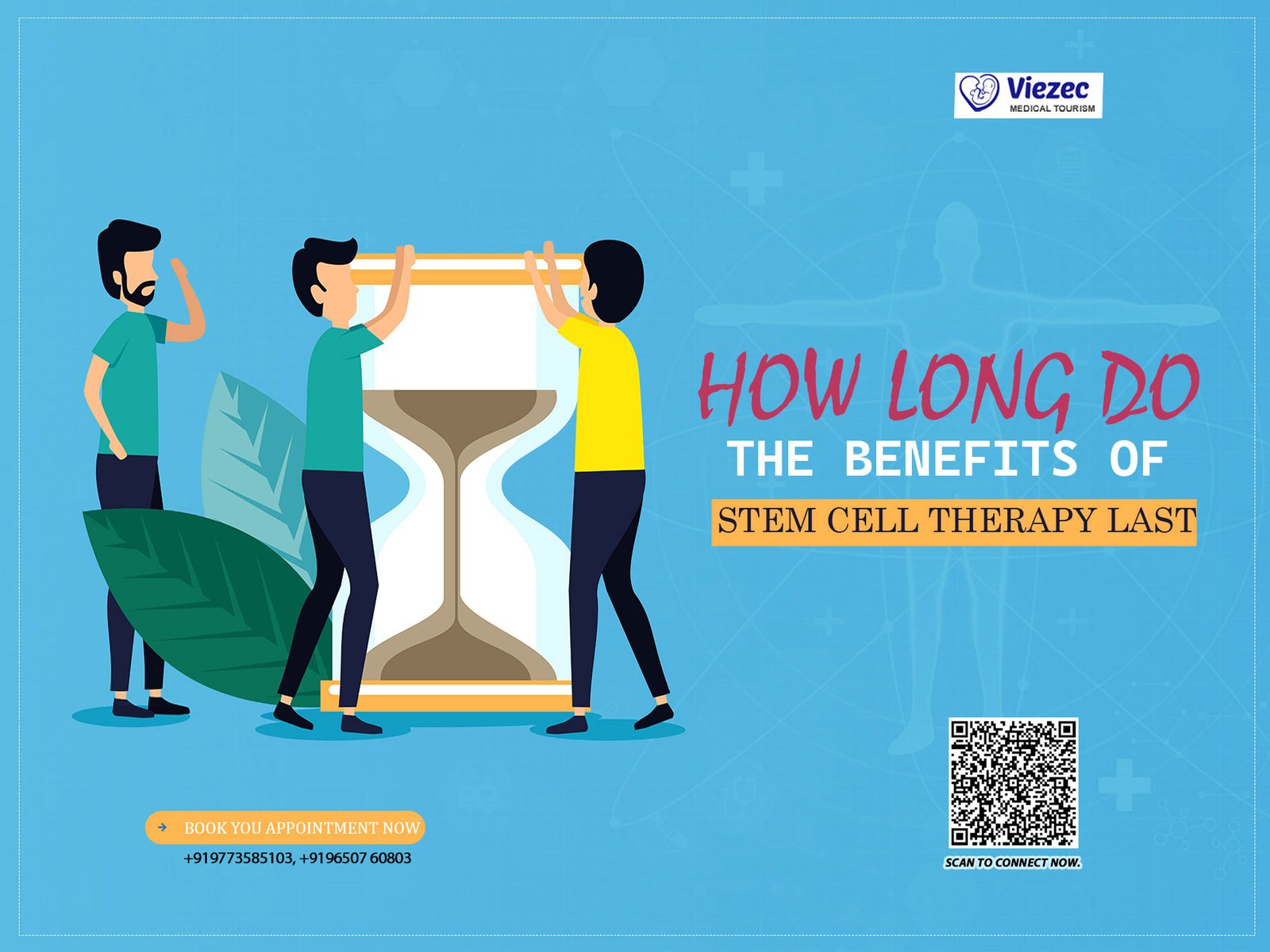In recent years, regenerative medicine—particularly stem cell therapy—has transformed how patients and doctors approach chronic and degenerative conditions. While conventional treatments have long been the foundation of modern healthcare, they often focus on managing symptoms rather than repairing damaged tissues. Stem cell therapy, on the other hand, offers a scientific, regenerative approach aimed at restoring function and promoting healing from within.
At Viezec, India’s trusted name in stem cell-based regenerative medicine, we aim to provide evidence-based, ethical, and effective treatment solutions that align with global medical standards.
Understanding Conventional Treatments
Conventional medicine—often called mainstream or allopathic treatment—forms the foundation of modern healthcare. It relies on scientifically tested procedures, medications, and surgeries that are proven to manage, control, or slow the progression of disease. These treatments have evolved over decades of clinical research and global medical practice standards.
At Viezec, we acknowledge the value of conventional approaches and believe they remain a critical part of comprehensive patient care. Understanding their principles helps patients make informed decisions when exploring regenerative alternatives such as stem cell therapy.

Types of Conventional Treatments
Conventional medical care encompasses a wide spectrum of therapies depending on the disease and its severity. The most common include:
Pharmacological (Drug-Based) Therapy
-
-
Involves the use of prescription or over-the-counter medicines to control symptoms or disease progression.
-
Example: Pain relievers, anti-inflammatory drugs, and immunosuppressants.
-
Limitations: Continuous or long-term use may cause side effects or dependency, and often does not repair damaged cells.
-
Surgical Interventions
-
When medication is not enough, surgery may be used to remove damaged tissue, repair structural defects, or replace organs with prosthetics.
-
Example: Joint replacement in osteoarthritis or bypass surgery for heart disease.
-
Limitations: Surgery is invasive, involves recovery time, and may not prevent recurrence of the underlying condition.
Physical and Rehabilitation Therapy
-
-
Aimed at improving mobility, strength, and overall quality of life after injury or illness.
-
Example: Physiotherapy following a stroke or spinal injury.
-
Limitations: Helps manage outcomes but doesn’t typically reverse cell or nerve damage.
-
Lifestyle and Nutritional Management
-
Doctors often recommend changes in diet, exercise, or stress levels to support recovery.
-
Benefit: Non-invasive and essential for maintaining health.
-
Limitation: Works best as a supportive measure rather than a stand-alone cure.
Benefits of Conventional Treatments
Conventional treatments continue to play a vital role in modern medicine because of their scientific validation—they are supported by large-scale clinical trials and global medical standards that ensure safety and reliability. These therapies are also widely available, making them easily accessible across hospitals and clinics in India and around the world. Patients often benefit from immediate symptom relief, as conventional methods can quickly manage pain, inflammation, or infection through proven medications and procedures. Additionally, the integration of advanced imaging and laboratory technologies enhances diagnostic accuracy, allowing doctors to identify conditions precisely and design evidence-based treatment plans that improve overall outcomes.
What Is Stem Cell Therapy?
Stem cell therapy is a form of regenerative medicine that uses the body’s own repair mechanisms to heal, replace, or regenerate damaged cells, tissues, and organs. Unlike conventional treatments that primarily focus on managing symptoms, stem cell therapy aims to restore normal function at a cellular level.
Stem cells are unique because they can self-renew (make more of themselves) and differentiate into specialized cell types such as nerve, muscle, bone, or blood cells. This remarkable ability makes them a promising tool for treating a wide range of chronic and degenerative diseases.
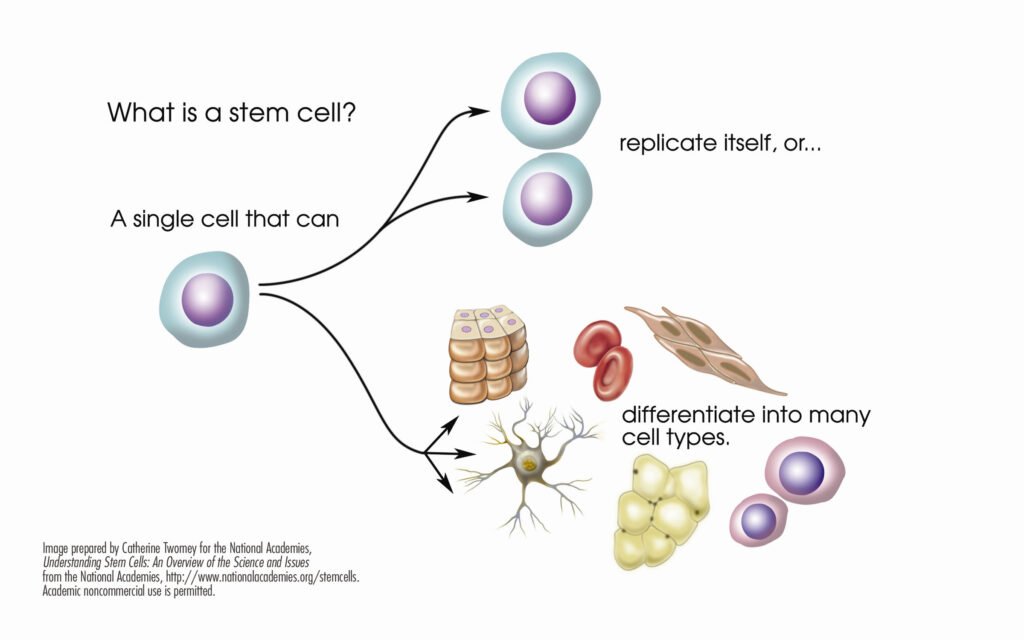
Types of Stem Cells Used in Therapy
There are several sources of stem cells, each with unique characteristics and applications. At Viezec, we primarily use ethically sourced, high-quality stem cells that comply with ICMR (Indian Council of Medical Research) and international safety standards.
-
Autologous Stem Cells – These are taken from the patient’s own body (for example, bone marrow or adipose tissue). Since they come from the same person, there is minimal risk of immune rejection.
-
Allogeneic Stem Cells – These are derived from a donor source, often umbilical cord tissue or cord blood. They are rich in young, potent cells with excellent regenerative potential and are processed in GMP-certified laboratories under strict medical supervision.
How Does Stem Cell Therapy Work?
Stem cell therapy follows a targeted and minimally invasive process:
-
Collection and Processing:
Stem cells are carefully collected from approved sources (such as bone marrow or umbilical cord tissue) and purified in advanced laboratory environments to ensure safety and potency. -
Administration:
The prepared stem cells are then administered into the patient’s body via intravenous infusion, localized injection, or other specialized routes depending on the medical condition. -
Regeneration and Repair:
Once inside the body, stem cells migrate to the damaged area, where they release growth factors, cytokines, and signaling molecules that promote cell regeneration, reduce inflammation, and stimulate natural healing processes.
This biological repair mechanism helps improve tissue function, reduce pain, and enhance overall recovery without major surgery or long-term medication.
Conditions Where Stem Cell Therapy Shows Promise
Stem cell therapy has demonstrated encouraging results in conditions such as:
-
Neurological Disorders: Autism, Parkinson’s disease, multiple sclerosis, stroke recovery
-
Orthopedic Conditions: Osteoarthritis, sports injuries, tendon and ligament repair
-
Autoimmune Diseases: Rheumatoid arthritis, lupus, Crohn’s disease
-
Chronic Degenerative Disorders: Diabetes, liver cirrhosis, COPD
Each condition requires a personalized treatment protocol, which Viezec’s medical team designs based on the patient’s age, medical history, and clinical evaluation.
Why Stem Cell Therapy is Considered the Future of Medicine
Stem cell therapy represents a paradigm shift from treatment to regeneration. Rather than simply controlling symptoms, it helps the body heal itself by leveraging its innate biological potential.
Ongoing global research continues to expand its applications — from managing neurodegenerative diseases to potentially aiding in organ repair and anti-aging interventions. For patients seeking safer, more natural, and longer-lasting solutions, stem cell therapy offers hope rooted in science.
Key Differences: Conventional vs. Stem Cell Therapy
The choice between conventional treatments and stem cell therapy depends on your medical condition, treatment goals, and the stage of the disease. While both aim to restore health and improve quality of life, their approaches, mechanisms, and outcomes differ significantly. Below is a detailed look at how they compare based on scientific principles, patient experience, and long-term outcomes.
Approach and Treatment Philosophy
Conventional medicine primarily focuses on controlling symptoms and slowing disease progression. For example, a patient with arthritis may receive anti-inflammatory drugs or undergo joint replacement surgery to ease pain and improve mobility.
In contrast, stem cell therapy takes a regenerative approach—it uses the body’s own biological cells to repair, replace, or rejuvenate damaged tissues. Rather than only managing pain, it aims to restore normal cellular function at the root level.
Goal of Treatment
The goal of conventional treatments is typically to provide symptom control and temporary relief. Medications, surgeries, or physiotherapy sessions are often repeated over time to maintain results.
Stem cell therapy, however, aims for biological repair and long-term improvement by stimulating the body’s natural healing mechanisms. In many cases, this approach may help slow or reverse tissue degeneration, offering better functional outcomes and an improved quality of life.
Invasiveness and Recovery Time
Conventional treatments such as surgeries are often highly invasive and require significant recovery time. Even non-surgical methods like steroid injections may involve discomfort or potential side effects.
Stem cell therapy, by contrast, is minimally invasive. It is usually performed through intravenous infusion or localized injection, reducing downtime and minimizing surgical risks. Most patients can return to normal activity quickly, with only mild and temporary post-procedure effects.
Duration and Sustainability of Results
In conventional medicine, treatment results often fade over time, requiring continuous drug intake or follow-up procedures. For chronic diseases, this means lifelong dependence on medications.
Stem cell therapy may offer longer-lasting benefits because it focuses on regeneration at the cellular level. As stem cells continue to function and integrate within the body, improvements can persist for months or even years, depending on the condition and patient response.
Personalization and Adaptability
Conventional treatments are often standardized, meaning most patients with the same diagnosis receive similar medical plans.
Stem cell therapy, however, is highly personalized. Factors such as age, disease severity, cell source, and health history are carefully considered before developing a customized treatment plan. This individualized approach allows greater precision and improved outcomes.
Cost and Long-Term Value
Conventional treatments may appear more affordable initially, but recurring costs—such as medications, hospital visits, and rehabilitation—can accumulate over time.
Stem cell therapy may involve a higher upfront cost, but since it targets the root cause of disease and potentially reduces the need for repeated interventions, it can be more cost-effective in the long run. At Viezec, we provide transparent pricing and financing options to make regenerative medicine accessible to patients across India and globally.
A Quick Comparison
| Aspect | Conventional Treatments | Stem Cell Therapy |
|---|---|---|
| Core Approach | Manages symptoms | Repairs and regenerates damaged tissues |
| Goal | Relief and maintenance | Regeneration and long-term recovery |
| Invasiveness | Often surgical or drug-based | Minimally invasive |
| Recovery Time | Can be prolonged | Usually short |
| Side Effects | Possible due to drugs or surgery | Low, when done ethically and safely |
| Customization | Standardized | Patient-specific and personalized |
| Cost Perspective | Repeated and long-term | One-time or limited sessions |
| Scientific Foundation | Traditional medical science | Regenerative and cellular biology |
When to Consider Stem Cell Therapy
Deciding whether stem cell therapy is the right approach depends on several personal and medical factors. Unlike conventional treatments that primarily focus on symptom management, stem cell therapy aims to repair, regenerate, and restore damaged tissues. However, it is most effective when applied at the right stage of a disease and under the right medical guidance.
We recommend patients consider stem cell therapy under the following conditions:

When Conventional Treatments Are No Longer Effective
Many patients explore stem cell therapy after years of taking medications or undergoing surgeries that bring only partial or temporary relief.
If your condition continues to progress despite conventional treatments—or if you’re tired of ongoing medication cycles—stem cell therapy may offer a regenerative alternative focused on long-term healing.
For instance, patients with osteoarthritis, neuropathy, or spinal cord injury often turn to stem cell therapy after exhausting standard medical options.
When You Prefer a Minimally Invasive and Natural Healing Approach
Stem cell therapy is minimally invasive, usually involving a simple infusion or targeted injection. Because the procedure uses biological cells—often derived from the patient’s own or ethically sourced donor tissue—it minimizes the risk of rejection and promotes natural healing.
This makes it a strong option for individuals seeking biological, low-risk alternatives to complex surgeries or medications with long-term side effects.
When You Seek Faster Recovery and Better Quality of Life
Stem cell therapy supports tissue regeneration, reduced inflammation, and improved functional recovery, which may lead to faster rehabilitation and better day-to-day quality of life.
Patients struggling with chronic conditions that limit mobility or cause constant pain—like arthritis, multiple sclerosis, or cerebral palsy—may experience gradual improvements in comfort and independence after undergoing stem cell-based treatment.
When You Want a Personalized, Science-Based Treatment Plan
Every patient’s condition, immune system, and recovery capacity are different. At Viezec, each stem cell therapy protocol is custom-designed after comprehensive medical evaluation, diagnostic testing, and consultation with regenerative medicine experts.
This personalized approach ensures that treatment is safe, targeted, and evidence-based, aligning with the patient’s health goals and disease profile.
When You Are Looking for Hope Beyond Traditional Limits
For many chronic and degenerative diseases, conventional medicine often offers limited options once the condition reaches an advanced stage. Stem cell therapy provides new hope by focusing on regeneration rather than replacement.
While it is not a guaranteed cure, ongoing clinical research and patient outcomes continue to demonstrate encouraging improvements in function and symptom control.
Conclusion
In summary, conventional treatments have long served as the foundation for managing chronic and degenerative conditions, effectively controlling symptoms and slowing disease progression. However, they often fall short in addressing the root cause of tissue damage. Stem cell therapy represents a revolutionary, regenerative approach, focusing on repairing, restoring, and enhancing the body’s natural healing mechanisms. While not a universal solution, it is particularly valuable for patients seeking minimally invasive, personalized, and long-term treatment options. By combining scientific research, clinical expertise, and ethical practices, Viezec offers patients in India a safe, evidence-based pathway toward improved health, functionality, and quality of life.
FAQs
What makes stem cell therapy different from conventional treatments?
Stem cell therapy focuses on repairing and regenerating damaged tissues using biological cells, while conventional treatments mainly manage symptoms through medications or surgeries. The regenerative nature of stem cell therapy helps target the root cause of a disease rather than offering temporary relief.
Is stem cell therapy scientifically proven and safe?
Yes. Stem cell therapy is supported by growing clinical research and trials worldwide. When performed under ICMR and GMP-certified medical protocols, it is considered safe and minimally invasive. At Viezec, all stem cell procedures follow strict ethical, safety, and quality standards.
Can stem cell therapy replace traditional medical treatments completely?
Not always. Stem cell therapy can complement conventional treatments or, in some cases, offer an alternative for patients who do not respond well to standard methods. The best approach depends on the patient’s diagnosis, severity, and overall health, which should be evaluated by a qualified medical team.
How long does it take to see results after stem cell therapy?
Results vary from person to person and depend on the condition being treated. Some patients notice improvement in a few weeks, while others experience gradual recovery over several months. At Viezec, follow-up evaluations help monitor progress and optimize results.
Which conditions can benefit most from stem cell therapy?
Stem cell therapy has shown promising results in managing neurological disorders (like Parkinson’s and autism), orthopedic issues (such as arthritis and sports injuries), autoimmune diseases, and certain chronic degenerative conditions. Viezec provides customized protocols for each patient’s needs.
Are there any side effects or risks involved in stem cell therapy?
Stem cell therapy is generally safe, especially when performed in a regulated clinical setting. Mild fatigue or injection-site discomfort can occur temporarily. Serious complications are rare when treatment is done under expert supervision with sterile, high-quality stem cells.
How is the cost of stem cell therapy different from conventional treatment?
While initial costs may seem higher, stem cell therapy can be more cost-effective in the long term, as it may reduce dependency on lifelong medications or repeat surgeries. Viezec offers transparent pricing and personalized plans for patients across India and abroad.
Why choose Viezec for regenerative therapy in India?
Viezec is one of India’s leading regenerative medicine providers, offering cutting-edge stem cell therapy with a team of highly experienced doctors and certified laboratories. We combine scientific precision, ethical sourcing, and personalized care to deliver safe, evidence-based outcomes.
